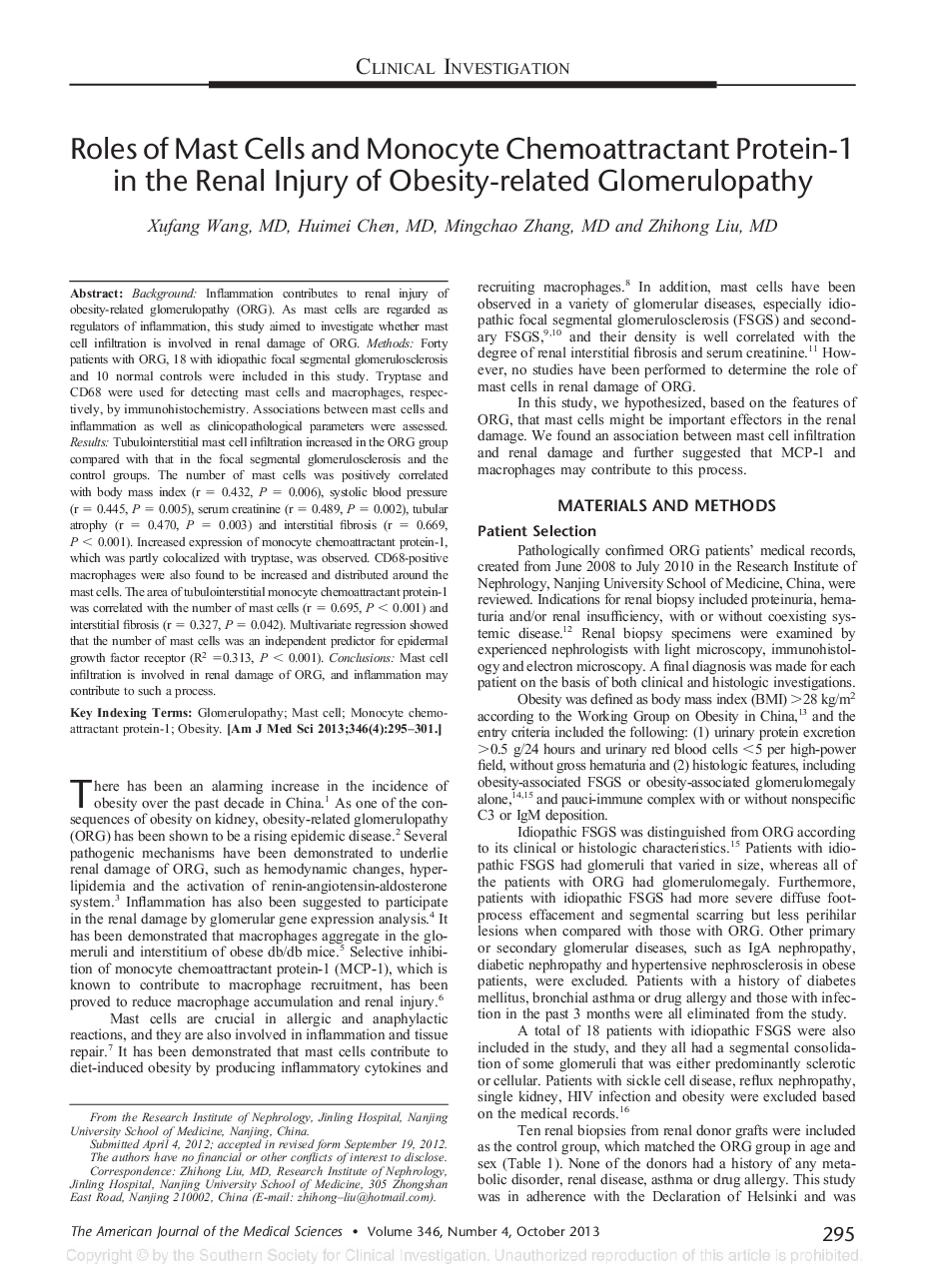| Article ID | Journal | Published Year | Pages | File Type |
|---|---|---|---|---|
| 2863604 | The American Journal of the Medical Sciences | 2013 | 7 Pages |
BackgroundInflammation contributes to renal injury of obesity-related glomerulopathy (ORG). As mast cells are regarded as regulators of inflammation, this study aimed to investigate whether mast cell infiltration is involved in renal damage of ORG.MethodsForty patients with ORG, 18 with idiopathic focal segmental glomerulosclerosis and 10 normal controls were included in this study. Tryptase and CD68 were used for detecting mast cells and macrophages, respectively, by immunohistochemistry. Associations between mast cells and inflammation as well as clinicopathological parameters were assessed.ResultsTubulointerstitial mast cell infiltration increased in the ORG group compared with that in the focal segmental glomerulosclerosis and the control groups. The number of mast cells was positively correlated with body mass index (r = 0.432, P = 0.006), systolic blood pressure (r = 0.445, P = 0.005), serum creatinine (r = 0.489, P = 0.002), tubular atrophy (r = 0.470, P = 0.003) and interstitial fibrosis (r = 0.669, P < 0.001). Increased expression of monocyte chemoattractant protein-1, which was partly colocalized with tryptase, was observed. CD68-positive macrophages were also found to be increased and distributed around the mast cells. The area of tubulointerstitial monocyte chemoattractant protein-1 was correlated with the number of mast cells (r = 0.695, P < 0.001) and interstitial fibrosis (r = 0.327, P = 0.042). Multivariate regression showed that the number of mast cells was an independent predictor for epidermal growth factor receptor (R2 =0.313, P < 0.001).ConclusionsMast cell infiltration is involved in renal damage of ORG, and inflammation may contribute to such a process.
